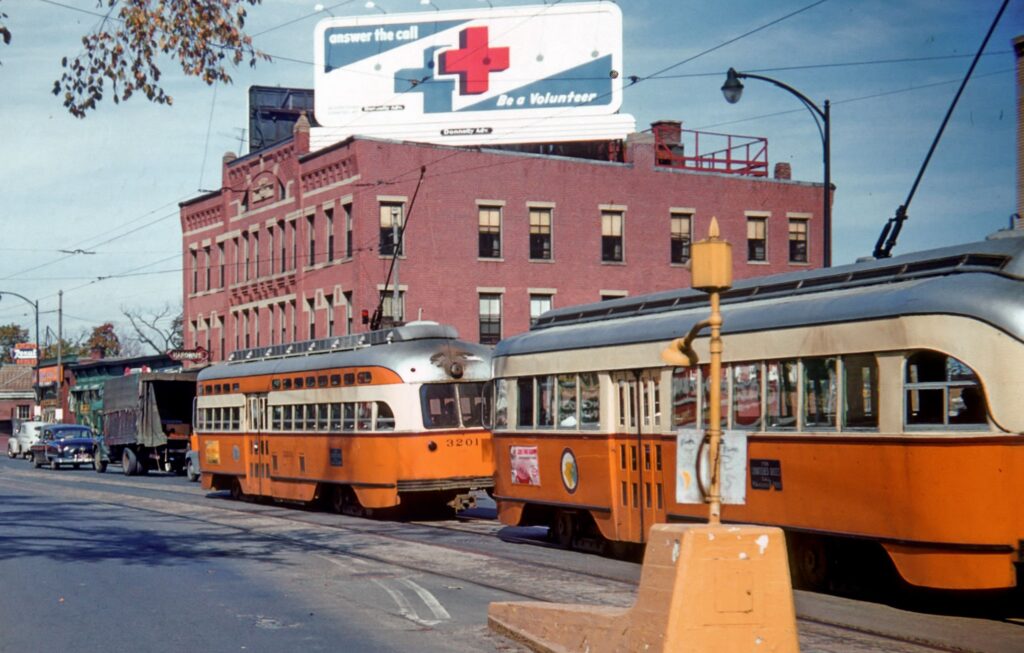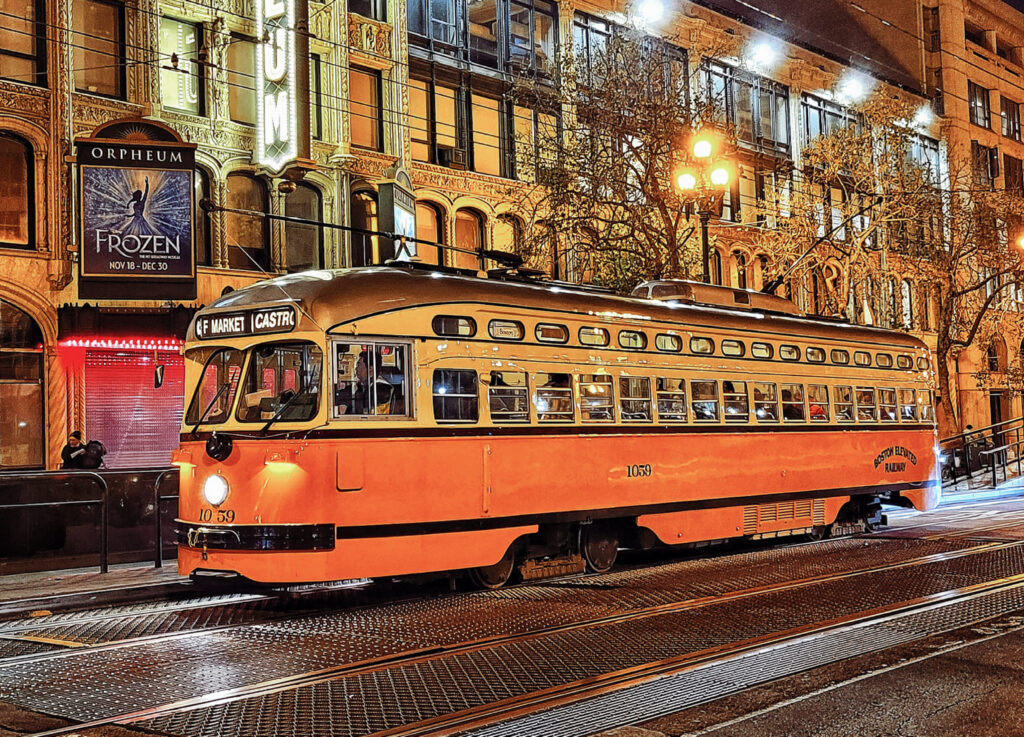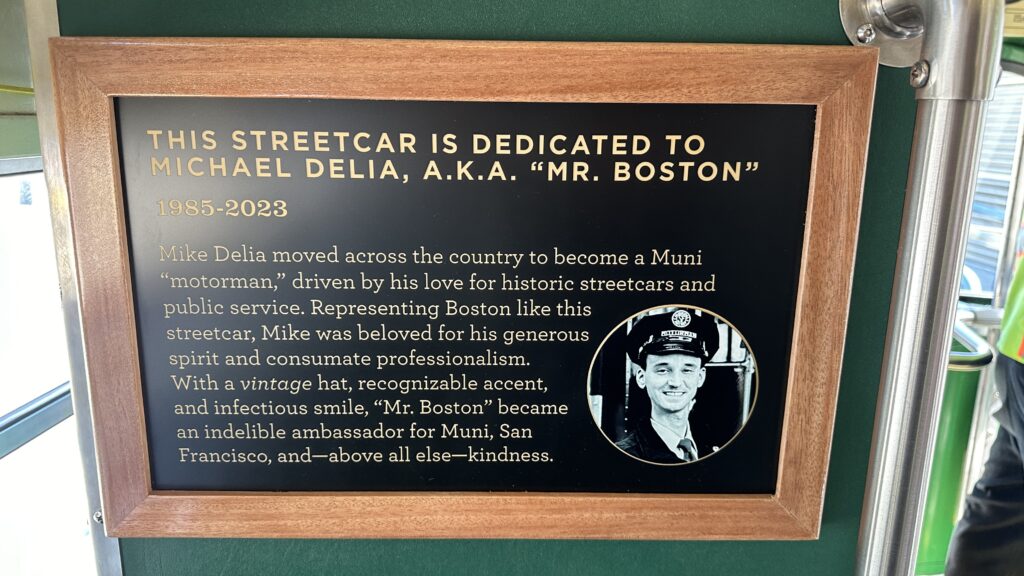No U.S. city has had longer or more varied experience with PCC streetcars than Boston. From the delivery of its first streamliner in 1937 until the present day, PCCs have been a part of the Beantown scene. That single PCC was ordered by private operator Boston Elevated Railway Company (BERy) and was followed by 20 more in 1941. No. 1059 is painted in tribute to the BERy era of PCC operation in Boston.
Boston did better than most other cities seeking to expand its PCC fleet during World War II, gaining U.S. government approval for 225 new cars built with controls that allowed two or more cars to be coupled together into trains. Boston’s single-end PCCs were unique in the U.S. for having additional doors on the left-hand side to accommodate passengers in Boston’s vintage subway.

In 1947, the Commonwealth of Massachusetts bought BERy and operated its lines as part of the Metropolitan Transit Authority (MTA). The MTA upgraded the PCCs it inherited and took delivery of 50 new PCCs in 1951 with large “picture windows” on the sides. (Though San Francisco ordered its last new PCCs after Boston, Muni chose the traditional design seen on Car No. 1040 instead.)
The livery of Boston’s PCCs changed in this era, to an orange and silver combination with a logo showing a map of MTA’s lines. In 1959, Boston added 25 double-end PCCs recently retired in Dallas, brining its PCC fleet to an all-time high of 344 cars. The “picture window” PCCs were assigned to the then-new Riverside line.
In 1964, the MTA became the MBTA (Massachusetts Bay Transportation Authority). The MBTA soon color-coded its rail lines and PCCs (green for most streetcar lines, red for the isolated Mattapan-Ashmont line, essentially an extension of the Red Line subway). Mattapan-Ashmont is the only Boston line operated by PCCs today, albeit rebuilt ones that have reverted to an orange and silver variation of the original livery.
In 1973, prodded by the US government, Boston and San Francisco jointly ordered new Boeing light rail vehicles to replace their PCC fleets. The Boeings proved unreliable in both cities, while the reliable PCCs continue to hold the hearts of San Franciscans and Bostonians alike.

In 2024, this streetcar was dedicated to the late Michael Delia, an F-line operator whose love for his hometown, Boston, and for heritage streetcars, was exceeded only by his friendliness to passengers and all he encountered.

 Originally built for
Originally built forPhiladelphia Transportation Company, Philadelphia PA, 1948 (as car No. 2099)
Acquired by Muni from
Southeastern Pennsylvania Transportation Authority, Philadelphia PA, 1992
Builder
St. Louis Car Co.
Restored by
Morrison-Knudsen, 1993
Seats
47
Weight
37,990 lbs.
Length
48′ 5″
Width
8′ 4″
Height
10′ 3″
Motors
4 Westinghouse 1432J
Trucks
B-2
Brakes
Electric
